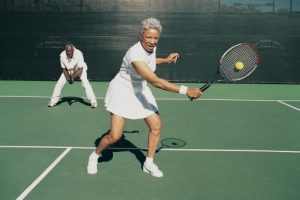
As we age we begin to use parts of the brain that are different from the ones we used when we were younger. When we’re young, we use the left side of the brain more than the right. The left side controls short term memory, language comprehension, and the recognition of previous events, objects, etc. When we age we begin to use more of the right side of the brain to perform such tasks. In our senior years we begin to use both sides, which is called HAROLD (hemispheric asymmetry reduction in older adults).
For the study 60 older Japanese men underwent exercise tests to measure aerobic fitness levels. The men then performed tests to measure selective attention, executive function and reaction time. For the second test, the researchers employed a well-known test called the “color-word matching Stroop test.” The men were shown words in colors like black, blue and red except the actual color of the words were not the color which was stated. The men were asked to share the color they saw, not the color they read. The time it took the men to state the color they saw was reported and determined brain function. Furthermore, the researchers used neuroimaging, which measured blood oxygen concentration in surface blood vessels, indicative of activity in the brain’s outer layers. The technology measures changes in oxygenated and deoxygenated blood from the brain regions that measure brain activity.
Results from the brain function and activity test were compared to the aerobic fitness test. The first set of findings confirmed that older adults do use both sides of the brain. The researchers then uncovered that men who performed better during the aerobic test performed better on the Stroop test as well. Furthermore, the fitter men used more of the left side of the brain – the side we use when younger – thus suggesting a physically fit body contributes to a younger brain.
Although the research was conducted on men, and it isn’t clear if research on women would yield the same findings, the researchers suggest that it’s still a good idea for women to also get out and exercise to maintain a younger brain.
The findings were published in NeuroImage.
Source:
http://www.eurekalert.org/pub_releases/2015-10/uot-aba102215.php